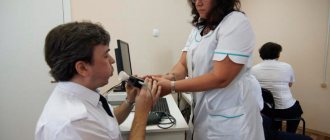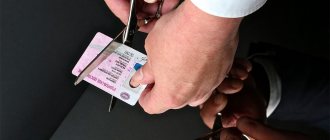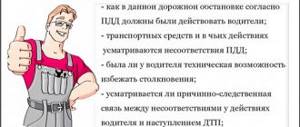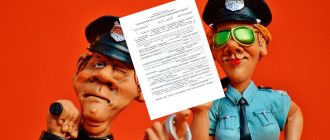As stated in the law
The driver's alcohol intoxication test is carried out in accordance with the following regulatory documents:
- Traffic rules Clause 2.3.2. This document establishes the obligation to undergo a medical examination at the request of a traffic police officer. Refusal to conduct research is not permitted by the rules;
- Code of Administrative Offenses, the document specifies penalties for driving motor vehicles while intoxicated (Article 12.8) and sanctions that can be applied to a driver who refuses to undergo an examination (Article 12.26). In both cases, the driver is punished with a fine of 30,000 rubles and a penalty of deprivation of rights for 1.5 - 2 years;
- the Criminal Code, according to which punishment is imposed in the event of injuries or deaths (Article 264);
- Order of the Ministry of Internal Affairs No. 664. The document establishes regulations for the implementation of supervision in the field of compliance with traffic rules;
- Government Decree No. 475, which approves the rules and procedure for conducting examinations and recording the results of the examination;
- Order of the Ministry of Health No. 933n, which also approves the procedure for conducting a medical examination, as well as provides samples of documents resulting from the examination and the rules for filling them out.
In accordance with paragraph 2 of the Government Decree, a driver examination must be carried out in the following situations:
- when a traffic police inspector detects primary signs of intoxication;
- when making a decision to initiate an administrative case under Article 12.24 of the Code of Administrative Offenses (violation of the rules for operating motor vehicles, resulting in mild or moderate harm to the injured party);
- when initiating a criminal case in connection with a traffic accident that resulted in serious harm to the health of the victims or death.
The main primary signs, upon detection of which an employee of the State Traffic Inspectorate has the right to direct the driver to undergo an examination, are (Article 3 of the Government Resolution):
- the presence of an alcoholic odor from the driver’s breath, detected during a conversation;
- instability, change in standard posture when operating a car;
- speech dysfunction (presence of unrelated or slurred statements);
- change in skin color on the face (hands). The skin may be excessively pale or have traces of redness;
- behavior that is inappropriate for the given situation (inappropriate).
Why was the entry into force of the amendment delayed?
The outcry of the civil society, the influx of drivers into medical institutions, the possible lack of laboratory resources - all this forced the Ministry of Health to extend the current order.
And although government medical institutions are equipped with the necessary equipment to conduct tests, a large flow of drivers will lead to a state of collapse of the system. In many regions, only 1-2 institutions have the right to conduct two new tests, which will bear the entire burden, including from the regions.
Experts expect that the delay in introducing the new scheme will continue until a compromise can be reached: making the medical examination procedure both accessible to citizens and effective.
Which service conducts
A test for the presence of alcohol in the driver’s body can be carried out:
- by a traffic police inspector directly at the scene of detecting signs of intoxication or recording a traffic accident with victims;
- by traffic police officers at the nearest stationary post, if appropriate equipment is available, or in the nearest mobile laboratory;
- doctors (narcologist, paramedic, therapist) in a medical institution that has the appropriate license.
All of these methods can be used equally if appropriate certified equipment and additional disposable devices are available.
The driver, at his own request, may request an examination not at the post or scene of the incident, but at a medical institution. This aspect will not be considered a refusal to undergo examination and will not be punished under Article 12.26 of the Administrative Code.
Situations when drivers are sent for examination
A medical examination is, first of all, aimed at identifying all possible contraindications for driving in the driver.
It can only be carried out in certain medical institutions that have the appropriate permission. Mandatory examination is carried out in the following cases:
When first obtaining a driver's license, all candidates undergo a medical examination:
- Passing a medical examination will also be necessary for citizens who, for any reason, change their driver’s license or obtain it again.
- Professional drivers of various types of transport undergo periodic medical examination.
- Separately, there is a medical examination of drivers who are suspected of driving under the influence of alcohol or drugs.
Where do they make it?
Each inspection location has its own nuances.
On the spot
At the scene of detection of an offense, the study is carried out using a breathalyzer - a special device that examines the air exhaled by the driver.
This type of examination can only determine the presence of alcohol in the driver’s body, and is absolutely unsuitable for detecting drug intoxication.
For testing, you can only use a certified breathalyzer that has passed the next verification. Documents on certification and verification must be with the traffic police inspector and presented upon request of the driver.
In addition to the breathalyzer, it is necessary to have disposable “tubes” (popularly called) through which air enters the device.
The results of the test are recorded in writing in a special document - an act, the form of which is established by Appendix 2 to the Order of the Ministry of Health.
A driver is considered to be intoxicated if the device shows more than 0.16 ml of alcohol in 1 liter of exhaled air, which corresponds to 0.3 ppm.
The established deviations from zero values are aimed at eliminating the error of the measurements, and in no case at all at allowing the consumption of alcohol during or before the operation of motor vehicles.
An examination at the scene of detection of signs of an administrative offense must be carried out in the presence of two witnesses or using video recording of the process.
If the driver’s examination is carried out in the presence of witnesses, then the full name, residential address and signatures of the witnesses must be reflected in the act recording the results of the examination.
At the traffic police
A test for the presence of alcohol in the driver’s body can also be carried out at the post or at the nearest traffic police department.
As in the previous case, exhaled air is subject to examination, and a breathalyzer with disposable “tubes” is used for testing.
The test results are recorded in the report.
In the hospital
The examination can be carried out in a stationary medical center and a mobile laboratory.
Laboratories equipped on the basis of vehicles are subject to certain requirements (Order of the Ministry of Health):
- the height of the laboratory interior must be at least 1.85 m;
- there must be a rubber track in the cabin for testing;
- Interior lighting must be at least 100 lux;
- the laboratory must freely accommodate two people (a doctor and a patient), as well as various equipment for conducting research, including express tests.
In a medical facility (mobile laboratory), an examination of a driver suspected of intoxication can be carried out:
- a breathalyzer, that is, by determining the amount of alcohol in exhaled air;
- by conducting medical tests on the driver's urine or blood.
The breathalyzer test is performed two times:
- immediately upon the driver’s arrival at the medical facility;
- 15 - 20 minutes after the first study.
If the test results differ significantly or do not show the presence of alcohol in the exhaled air, then the driver is sent for testing.
Urine is usually used to test the driver for alcohol intoxication, and blood is used to test for the presence of drugs.
The presence of alcohol in the blood or urine in an amount of more than 0.3 ppm indicates that the driver is intoxicated.
The report on passing a medical examination in a medical institution is drawn up by the doctor on duty, who may be a paramedic, therapist or directly a narcologist. The presence of witnesses and video recording are not required in this situation.
The deprivation of rights for alcohol intoxication in 2021 for the first time is described in the article: deprivation of rights for alcohol intoxication for the first time.
Read about the amnesty for those deprived of their rights for alcohol intoxication in 2021 here.
Supreme Court on violations of the medical examination procedure for drivers
The Supreme Court has become very strict regarding the examination procedure for such drivers. Lawyers claim that medical certificates issued in violation of the procedure began to be recognized as inadmissible evidence just three months ago. This gives confidence that doctors will treat the procedure with due attention. Accordingly, the number of unjustified punishments will be reduced.
So, let's give specific examples. On December 7, the Supreme Court considered the complaint of a certain A.V. Chelpanova. The magistrate charged him with drunkenness and imposed a fine of 30 thousand, as well as 1 year and 10 months of deprivation of the right to drive. All subsequent courts confirmed the decision of the magistrate. However, the Supreme Court, having studied the case materials, came to a different conclusion.
The fact is that, according to the instructions for conducting a medical examination, measurements must be made either with one quantitative analysis device with a difference of 20 minutes, or with two qualitative analysis devices with the same time difference.
We are talking about instructions for a medical examination for the state of intoxication of a person who drives a vehicle, and for filling out registration form 307/U-05 “Act of a medical examination for the state of intoxication of a person who drives a vehicle” (Appendix No. 3 to the Order of the Ministry of Health of the Russian Federation dated July 14, 2003 N 308 “On medical examination for intoxication”).
This is a very important point. Now we will explain why. In the case of Chelpanov, the doctor did not take a second measurement. Thus, the procedure was violated, and therefore the Supreme Court considered that this could not be clear evidence that the driver was driving while drunk. Any doubt is interpreted in favor of the accused. Therefore, the Supreme Court released him from this punishment and terminated the administrative case due to the expiration of the statute of limitations.
Another incident occurred in Kaluga. There the doctor measured the exhalation, observing the time frame, but with two different instruments. However, the instructions say otherwise. And for a reason. Each device has its own error values. According to lawyer Lev Voropaev, in this case the instrument readings differed slightly from 0.16 mg/l, so measurement with a second instrument could distort the measurement result, which would have been obtained if the measurement was carried out with only one instrument, taking into account the fact that each instrument has its own error.
The third case is even more interesting. The doctor even measured the patient’s exhalation three times! But the Supreme Court did not consider these measurements legal.
Let's start with the fact that the instructions specify two measurements with strict adherence to the time frame. In this case, the time was not respected. Therefore, it is impossible to establish over what periods the measurements were taken.
As a result of the first measurement, the device showed an amount of alcohol of 0.21 mg/l of exhaled air. The second measurement showed 0.12 mg/l. And the third, which no longer met the requirements of the instructions, showed a result of 0.2 mg/l.
Let us recall that the law establishes a possible total measurement error of 0.16 mg/l. It includes both the error of the device itself and meteorological conditions - outside temperature and humidity also affect the instrument readings and metabolic processes in the body of the stopped driver.
Therefore, the Supreme Court found that the measurements were carried out in violation of the instructions. It is unknown how often they were carried out. In addition, one of the measurements showed a result below the established error. Therefore, you should not trust these readings. Moreover, doctors did not establish the state of intoxication based on clinical signs. That is, they were either invented by traffic police officers, or they simply did not exist.
“In this case, the second result plays a greater role than the third, which was carried out in violation of paragraph 16 of the order of the Ministry of Health,” says Lev Voropaev. — This conclusion was also made because the citizen does not have clinical signs of intoxication (previously, paragraph 16 of the Order made a direct reference to them as circumstances that should be taken into account when establishing a state of intoxication). And here, by the way, the judge, in support of his position, clearly states that the results of the examination differ slightly from the error of 0.16 mg/l.
It is noteworthy that the Supreme Court is increasingly taking this minor difference into account. In addition, the Supreme Court also takes into account the history of offenses.
Here's another case. A certain driver Shtuko was caught in the Saratov region early in the morning while drunk. Both inspectors and doctors carried out all measurements and examinations as expected. The court sentenced him to a fine of 30 thousand rubles and deprivation of the right to drive for 1 year and 11 months. Almost to the maximum. The driver challenged this ruling in the Supreme Court. The highest judicial body recognized that his guilt was fully proven. However, I was surprised by such a harsh punishment.
The driver had never committed an offense before, much less been caught driving drunk.
Therefore, the Supreme Court decided that he should not bear such a severe punishment. Other offenses committed by him may be aggravating. But in reality they are not. And, apparently, they were not provided at the request of the Armed Forces. Thus such a severe punishment does not quite correspond to the violation. Therefore, the Supreme Court reduced the deprivation of rights to the minimum level.
According to Lev Voropaev, the Supreme Court in this regard is much more humane than district and regional courts. They can reduce the punishment by a month or two.
The procedure for testing for alcohol intoxication
So, a medical examination in a medical institution is carried out in the following order:
- after the driver arrives (he can come independently or be brought by a traffic police inspector), a form is filled out indicating the full name, date of birth, residential address and passport details (the document can be replaced with a driver’s license if the person is brought to the examination by a traffic police officer) of the person being examined;
- a specialist visually examines the subject for signs of intoxication, traces of injections, and also conducts tests for coordination (Romberg test), pupil reaction to external stimuli (Taschen test) and attention or concentration (Schulte test);
- using a breathalyzer, an air sample is taken, which shows the presence/absence of alcohol in the vapor;
- after 15–20 minutes, the breathalyzer examination is performed again;
- the results of the first and second tests are entered into a report that will be issued after the study;
- if the driver has obvious signs of intoxication or the results of two tests are very different from each other, then the driver is tested for a chemical-toxicological study, the results of which are also recorded in the report. To avoid the possibility of falsifying test results, certain requirements are imposed on urine: compliance with the temperature regime (at least 32º), which indicates the freshness of the material being tested, and the presence of certain substances, indicating the absence of dilution of the biological material. The urine test is also carried out twice: after collection (express test) and in a specially equipped laboratory. A blood test is performed only if the subject has any specific diseases or if it is impossible to obtain urine within 30 minutes after treatment;
- The document completed and signed by the doctor is recorded in a journal and given to the person being examined.
Before being sent for a medical examination, a traffic police officer must:
- remove the driver from driving the vehicle, as evidenced by the protocol;
- detain the car also by drawing up a protocol. The form of both documents is approved by the regulations of the Ministry of Internal Affairs.
Refusal to carry out the examination procedure
If there is a suspicion that the driver is drunk, but he refuses to undergo the procedure, he will face the following consequences:
- Deprivation of the ability to drive a car, because in fact, refusal is an admission of guilt in the offense committed.
- Administrative penalty in the amount of thirty thousand rubles.
- Referral to re-pass the medical examination.
How to avoid punishment for refusal?
Refusal to undergo examination may occur for various reasons. Sometimes traffic police inspectors themselves mislead people without warning about possible consequences. It is quite difficult to defend your rights, although it is possible to avoid restrictions on driving.
For example:
- Violation of the procedure for drawing up a protocol; most often the issue arises with witnesses who either are not there or they turn out to be “dummy”.
- If alcohol was consumed in the evening, and in the morning there was an urgent need to drive, for example, a direct threat to the life of another person. In this case, the court may well change the punishment to a more lenient one.
Should there be witnesses?
The need for the presence/absence of witnesses during an examination is established by a specific situation in which the research is directly carried out:
- if the examination is carried out in a licensed medical center, then no witnesses are required. The presence of alcohol or other illegal drugs will be certified by the doctor’s signature;
- If the examination is carried out by traffic police officers directly at the place where the offense was detected or at a stationary post, then the fact of the examination, the correct sequence of actions, as well as the certification and verification of equipment can be proven by a video recording made during the procedure or by witnesses in the amount of two people.
The right to choose the method of confirming the correctness of actions belongs exclusively to the employees of the State Traffic Inspectorate.
Punishment for driving while intoxicated
This violation of traffic rules is extremely serious and the punishment for it is appropriate. After all, you must agree that a drunk driver is a potential criminal who puts the life and health of the people around him at great risk.
Depending on the circumstances, the following measures may be applied to the driver:
- Deprive the driver of the right to drive a car for up to three years.
- Administrative penalty in the amount of thirty thousand rubles.
To summarize, I would like to note that driving while under the influence of alcohol is simply unacceptable.
In addition to severe penalties, which will significantly complicate the life of the driver, there is a risk of harming others. You shouldn’t play with fate and risk your lives, just follow the traffic rules.
Didn't find the answer to your question? Find out how to solve exactly your problem - call right now: +7 (Moscow) +7 (812) 309-53-42 (St. Petersburg) It's fast and free!
Free online consultation with a car lawyer
Didn't find the answer to your question? Find out how to solve exactly your problem - call right now: +7 (Moscow) +7 (812) 309-53-42 (St. Petersburg) It's fast and free!
Determination of ppm in an accident
The examination for intoxication after a road accident is carried out by traffic police inspectors on site or in a medical center according to all the previously stated rules after the accident has been fully recorded.
That is, before sending the driver for examination, the following must be drawn up:
- administrative violation protocol;
- road accident diagram;
- protocol on removing the driver from driving.
Additionally, photos or videos are taken and witnesses are interviewed. These actions, together with the results of the examination, will help identify the culprit of the incident, who will bear administrative or criminal liability.
The rules for conducting a medical examination to detect the presence of alcohol and other drugs prohibited by current legislation in drivers are becoming more stringent over time.
This factor is aimed at reducing the number of crimes and preserving the lives and health of citizens.
Procedure for referral for medical examination
Fines for refusal
A driver who repeatedly refuses a drug test will face fines. Read more here.
The rules for sending persons suspected of administrative offenses for a medical examination for intoxication were established by the Russian government on January 23, 2015. They regulate the procedure for checking persons who have committed any administrative offense:
- A referral for a medical examination for intoxication occurs only if there are factual grounds for asserting that the person guilty of committing an administrative violation is in a state of intoxication.
- The list of grounds is approved by the Ministry of Health of the Russian Federation and contains a list of clinical signs of intoxication listed in the Rules for referral for examination of persons driving vehicles.
- When referred for the procedure, a protocol on referral for a medical examination is drawn up, meeting the same conditions as the protocol drawn up by traffic police officers.
- The drawing up of a protocol on referral for examination is carried out exclusively by a person authorized to draw up protocols for administrative violations.
- A copy of the protocol is given to the person sent for examination against signature.
- If the person who committed the offense refuses to undergo an examination for intoxication, a protocol must be drawn up, but a note about the refusal is made in it.
- A medical institution that is authorized to conduct a medical examination has a license to carry out activities of this type.
- The protocol on referral for medical examination must contain data about the person sent for testing and information on the basis of which these data were established.
- When a minor offender is sent for examination, the child’s legal representatives are notified about this.
Refusal to undergo a medical examination when committing an administrative offense while intoxicated is an aggravating circumstance when imposing a sentence. In fact, a person who is not intoxicated, having undergone a medical examination, is in a better position than if he refused to undergo it.










